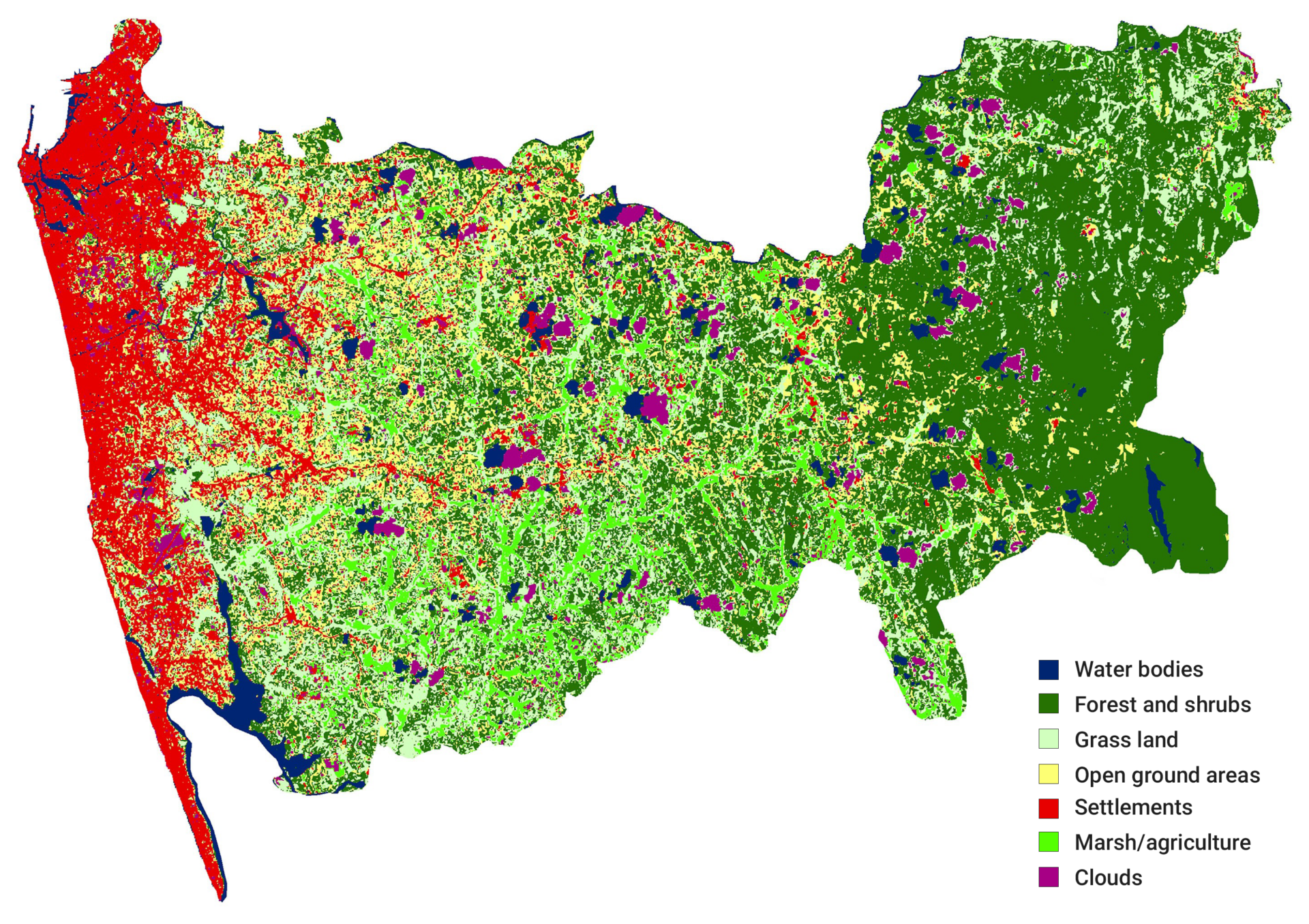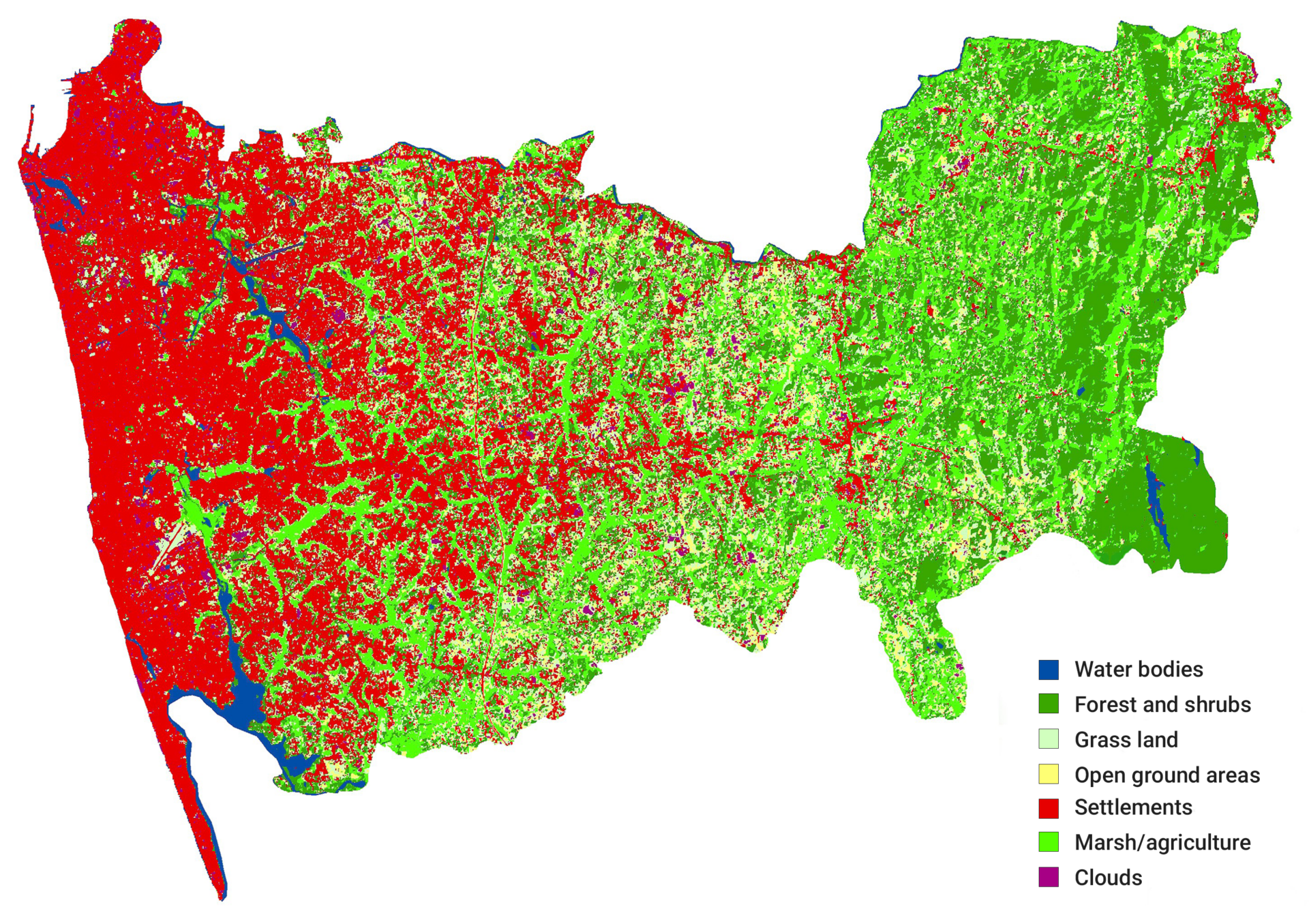Sri Lanka’s once-maligned wetlands are finding new purpose and appreciation as a bulwark against climate disasters. (Photo by Tristan Bove)
Editor’s note: This article was produced in partnership with Northwestern University’s Medill School of Journalism, Media, Integrated Marketing Communications.
June 7, 2024
As a young girl living on the outskirts of Colombo, the capital of Sri Lanka, Fareeda Emran sometimes prayed for the torrential rains that brought heavy floods to the city during the island country’s monsoon seasons. Floods usually meant no school and more time to play with her friends, said Emran, now 78. She even remembers finding the trunks of fallen papaya and banana trees and refashioning the bark into a raft, which she and her siblings would use to slide down the muddy incline by their home into the submerged streets below.
The floods weren’t nearly as much fun for the adults.
During one particularly bad deluge in the late 1960s, Emran’s family had to temporarily relocate. She remembers her grandfather stubbornly refusing to leave his home, so his sons made daily trips by boat to deliver supplies. On one such run, Emran’s uncle recounted seeing three men rummaging around a neighbor’s house, “probably looting,” she said. On his return trip, two of the men were frantically looking for their companion who had fallen into the water. They recovered his body only after the waters receded.
Flooding remains a problem in Sri Lanka’s mostly low-lying coastal areas, and it is getting worse. Climate change, coastal erosion, and urbanization are magnifying the impact of floods, researchers say. In Colombo, decades on from Emran’s youthful water-sliding days, floods remain a matter of life or death.

A natural network of wetlands and waterways worm their way through Colombo’s urban sprawl, providing a home for unique wildlife and irrigation for rice paddies. At the tail end of the 20th century, when Colombo was a city hell-bent on growth, many of these areas were drained to make way for new construction. But in the face of increasingly intense storms and flooding events fueled by climate change, these ecosystems could soon become the area’s greatest strength.
If Colombo can harness its nearly 5,000 acres of wetlands to limit destruction wrought by floods, it would provide valuable lessons for cities around the world, as climate change makes rainfall and water levels more dangerous with each passing year. But the city’s recent history is also a cautionary tale of what can happen when prioritizing urban growth reduces the role of ecosystems from life-saving natural resources to disposable nuisances.
Wetlands are natural absorbers, acting as a sponge when water levels are high and releasing water when flood levels recede. The biodiversity in the wetlands also helps scrub pollutant and chemical components from the air and water, creating a healthier and cleaner ecosystem for the species that inhabit them, including humans.
“Wetlands are the lungs and kidneys of this city,” said Nimala Shantha Wijayaratne, deputy general manager at the Sri Lanka Land Development Corporation’s wetland management division, a semi-governmental body that handles and develops the nation’s low-lying marshlands.
Wetlands’ role as a nature-based solution to flooding has gained more attention in recent years as Wijayaratne’s department has built several urban wetland parks around the city. International institutions like the World Bank have framed wetlands as indispensable assets in their financing programs for the country. And in 2018, the Ramsar Convention, an international treaty promoting the conservation of wetlands, named Colombo as a global Wetland City, the first and so far only capital city crowned with that title.
But officials have their work cut out for them. The end of a 26-year-long civil war in 2009 was followed by years of urbanization and land reclamation to accommodate Colombo’s soaring population. Growth chipped away at the wetlands’ natural ability to slow down floods.
Prioritizing Colombo’s wetlands will require more than governmental action; citizens will also have to be persuaded to overcome decades of disdain towards the ecosystem. For most residents, the wetlands have historically represented, at best, an unregulated trash dump, and at worst, a dangerous place filled with unscrupulous characters and menacing wildlife, according to Missaka Hettiarachchi, a senior fellow at the World Wildlife Fund. His research on flood risk and wetlands in Colombo has provided the foundations for many of the ongoing restoration efforts.
“We are trying to remind Sri Lankans how important their wetlands are,” he said. “As a nature-based solution they are one of the best tools we have.”
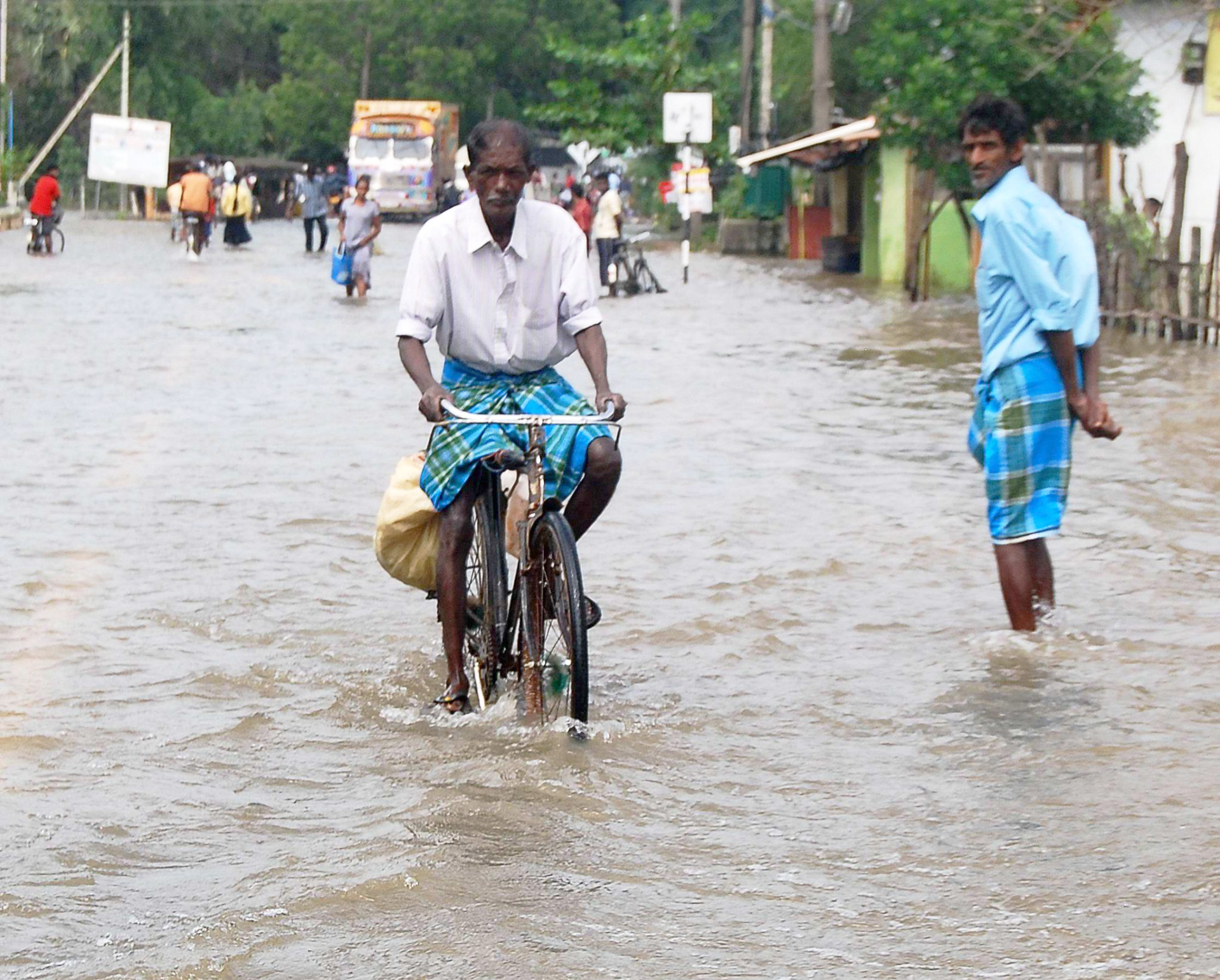
Anatomy of a disaster
Outside of its central mountainous region, most of Sri Lanka is at or near sea level. Violent rains and tropical storms batter the country during its two main monsoon seasons, often causing more than 100 rivers that crisscross the island’s flat plains to overflow with disastrous results.
Floods remain among the largest drivers of damaged property and cropland in the country, according to Sri Lanka’s Ministry of Disaster Management. And research shows flooding is getting worse. In the Colombo area alone, at least 1.5 million people have been affected by floods in the past 40 years, one recent study found, with more than half of disastrous floods occurring in the last decade. The country’s last major flood, in 2017, led to more than 200 deaths, displaced another half a million people, and destroyed nearly 2,600 homes. A year earlier, similarly intense floods caused over 100 deaths.
Colombo’s natural vulnerability to floods is exacerbated by two modern triggers: climate change and urbanization. Government officials warn about higher extremes in rainfall patterns linked to climate change, which could lead to more frequent and severe flash floods. International institutions caution that even under mild warming scenarios, climate change could lead to more frequent extreme river flows and floods. The 100-year flood level only marks a risk that is one in 100 in any given year. And the risk is rising to one in 25 for the most severe floods to occur, according to a 2020 report from the Asian Development Bank. In addition to property damage, extreme river flows and the resulting flooding could also lead to more standing water for mosquitoes to breed in and faster spread of dangerous communicable diseases such as dengue.
Fast population growth in and around Colombo has also magnified flood risks by reducing the extend of wetlands and, therefore, their ability to absorb water. The city’s population really started taking off in the late 1970s, when a series of pro-market reforms liberalized the economy and opened the gates to foreign investment. During the liberalization period, welfare benefits were curtailed and privatization took off, pushing job-seeking migrants from Sri Lanka’s countryside to Colombo, Hettiarachchi said.
The government initiated a series of urban redevelopment plans to accommodate the influx of new residents. A major 1978 plan sponsored by the UN prioritized freeing up space in central Colombo for commercial activities and new developments, especially new housing. The wetlands encircling Colombo were a prime target, and the government cheaply acquired and drained acres of them for new construction. Since the 1980s, as much as 60 percent of Colombo’s wetlands has been lost due to draining and infilling, according to a 2016 government strategy report.
“Around when all the new developments started happening is when floods really started increasing,” Hettiarachchi said.
It would be years before local officials began recognizing the crucial role wetlands play, and to start rethinking rampant development.
The Colombo metropolitan area’s marsh and forestland has slowly given way to human settlements over the past two decades, as seen in these maps of land-use in 2001 and 2017. (Visualization by Tristan Bove. Maps used with permission by Harsha Dahanayake and Deepthi Wickramasinghe)
Greenwashing Colombo
After the end of the nation’s civil war in 2009, the country was awash with cash for post-war reconstruction funding. Then-President Mahinda Rajapaksa embarked on a sweeping beautification campaign in Colombo, which included building new green spaces in the city center to lure international business and tourism to the island. These helped boost the city’s appeal but did little to restore wetlands.
Colombo’s post-war embellishment carried on under the pretense of rebirth and economic renewal, but Rajapaksa’s urban redevelopment plan was also heavily militaristic, said Anushka Wijesinha, an economist and director of the Centre for a Smart Future, a public policy think tank. Sri Lanka’s armed forces swelled in numbers after the war, while military involvement seeped into industries as diverse as tourism and urban planning. The Rajapaksa administration’s singular focus on security meant that greening projects rarely prioritized environmental and social well-being, according to Wijesinha.
“Urban beautification after the war was really just cosmetic, and not much about making the city more sustainable,” he said.
The policy led to thousands of forced evictions in central Colombo, primarily affecting low-income Sri Lankans—many of them people displaced by conflict or soldiers returning from the war-torn north of the island. They were forced to relocate to new public housing settlements built on drained wetlands in the outskirts of the city. Some tenants became evicted with the backing of a World Bank-funded program to refurbish the city’s aging canal infrastructure. Independent studiesestimated anywhere from 280,000 to 500,000 people were relocated between 2010 and 2014.
In the mid-2010s, on the heels of the government-sanctioned land grabbing, the city began to feel the loss of its vital wetlands. After a few catastrophic flood years, the World Bank began calling for an “integrated urban flood control and urban wetland management approach.” While the city had turned to several engineering mechanisms to protect itself from floods over the years, including widened canals, pumping stations and artificial lakes to drain rainwater, it had become clear that wetlands should be embraced, not drained and paved over.
But after more than 30 years of pro-growth policies at the expense of the environment, Colombo’s wetlands had been relegated to the fringes of civil society in the Sri Lankan psyche—worth less than the houses that could be built there. Not only did officials have to rehabilitate the wetlands’ natural superpowers to absorb and purify water; they also had to convince Sri Lankans that doing so would be worth it.
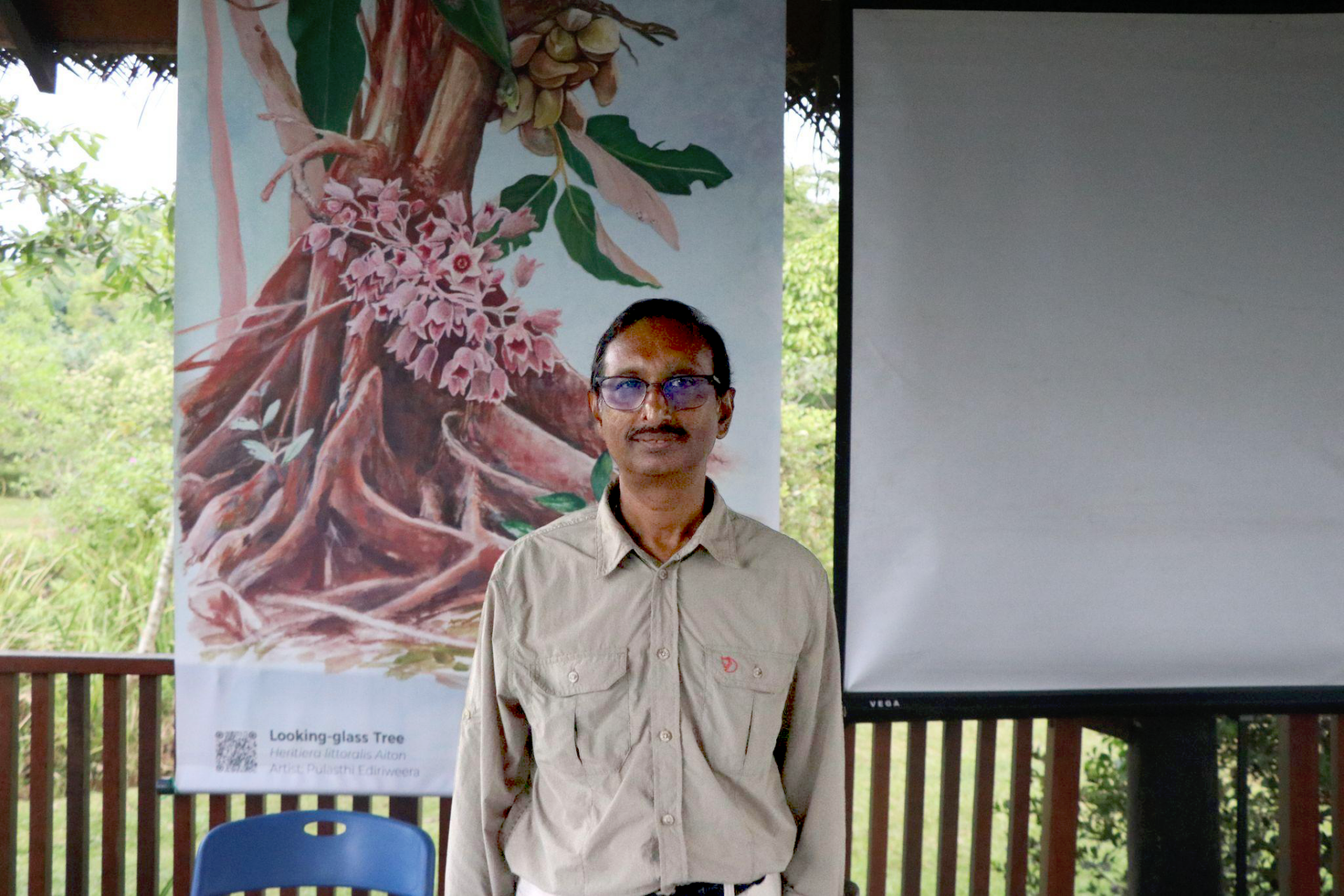
Reclaiming ‘inaccessible’ land
Growing up in Colombo during the 1970s and ‘80s, Deepal Warakagoda honed a deep interest in the diverse bird species that inhabited wetlands. He is now one of the nation’s leading ornithologists, discovering a handful of new migrant bird species in Sri Lanka, including the Serendib Scops-owl, a small chestnut-colored owl with an arrow-shaped head. It was the first new bird species discovered in Sri Lanka in more than a century.
But as a child, he was often told by adults not to venture into the wetlands. He remembers warnings about illegal hunters and loggers making their homes in the reeds, which could also be host to diseases and wild animals.
“Bird-watching was not popular when I was younger,” he said. “The habitat was always there. It was just inaccessible to us.”
Warakagoda’s childhood experience with the wetlands is one shared among most Colombo residents above a certain age. The ecosystem has historically been viewed as a wild and unpredictable land, the perfect place for illegally dumping trash but little else.
Officials are trying to change that perception. Over the past decade, Wijayaratne, the chief of the wetland management division, has shepherded the development of four urban wetland parks in and around Colombo. These are rehabilitated wetlands, built from the scraps of abandoned paddy fields, but now repurposed into sprawls of flooded forests and marshlands complete with walkways, rest areas, and a host of other amenities to make the parks as appealing to humans as they are to wildlife.
The most visible of Colombo’s new wetlands is Diyasaru Park, which sits on a 60-acre expanse of land, a stone’s throw from the artificial lake and island that house Sri Lanka’s imposing parliament building. On any given morning, the park teems with life, home to more than 80 species of wetland birds, a few scores of colorful butterfly species, and even the occasional water monitor, a large lizard, shy by nature, that foreigners often mistake for a crocodile.
The park is usually packed with people, too, from bird watchers to couples strolling hand-in-hand. It often hosts cultural events, including a World Wetland Day celebration held in early February. And on most days, guides lead gaggles of schoolchildren through the park on field trips.
The city’s newest wetland park, opened in February in the flood-prone Gothatuwa neighborhood, leans even more heavily into the recreational angle. Gothatuwa Park already has biking and walking paths, and if developers can secure more private investment, they want to build butterfly gardens, a cafe, a river-side campsite and even a co-working space. If Diyasaru worked as a proof of concept that showed urban wetland parks could draw visitors, Gothatuwa is designed to turn wetlands into a cornerstone of locals’ lives, said Kasun Bandara Hettinayaka, a civil engineer working on the new park.
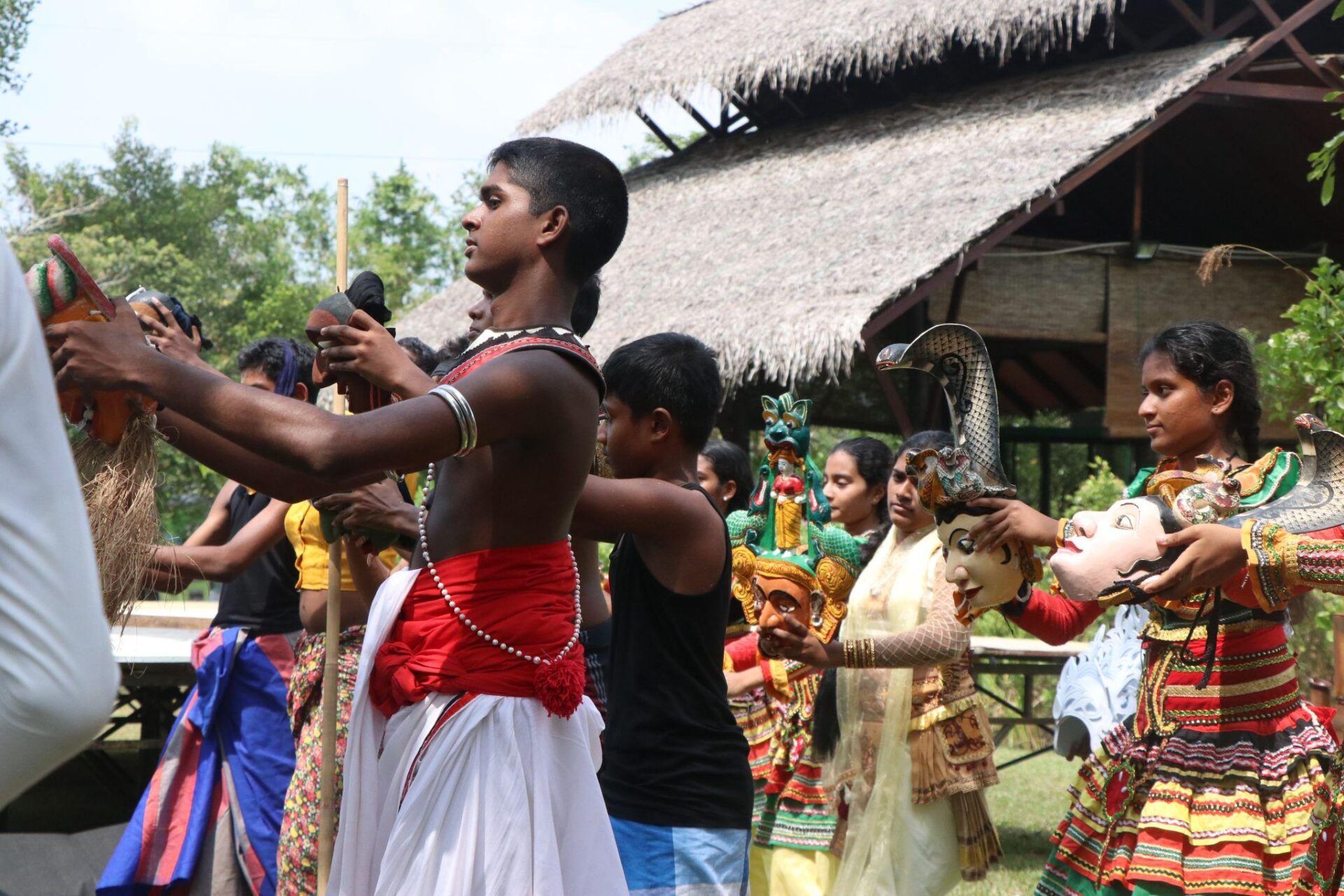
Early signs suggest Colombo’s cheerleader campaign for wetlands is working. The households encircling Gothatuwa Park’s 90 acres were not initially supportive of the project, and Hettinayaka admitted grievances could emerge again. But for now, locals regularly take to the park’s pathways for evening strolls and sunrise jogs.
As critical as wetlands are in stemming damage from floods, it could be these recreational opportunities that really help Colombo fall back in love with its wetlands, said Chaturangi Wickramaratne, a freshwater ecologist at the International Water Management Institute, a global research organization headquartered in Colombo.
Even for people not looking for a leisure experience in the marshes, nearly 90 percent of Colombo’s wetlands provide sustenance and additional income for the city’s lower-income residents. While residents cannot hunt or fish in the urban wetland parks, many fishermen remain active in the canals and lakes that encircle the city. Farmers also use thousands of acres of functional wetlands not directly managed by the government to cultivate rice, beans and gourds, according to the city’s 2016 report outlining its wetland management strategy.
“A lot of people now see wetlands as something valuable, partly thanks to government entities that have taken ownership of the wetlands,” Wickramaratne said. “People can value direct benefits more than indirect benefits like flood mitigation.”
The challenge for officials is ensuring that the fondness for wetlands in Gothatuwa and Diyasaru becomes the norm instead of an outlier choice. Residents and frequent visitors to the wetland parks have benefitted from years of interactions with ecologists and conservationists singing the wetlands’ praises. But in other parts of Colombo, old habits die hard.
A royal lake and a pile of trash
The morning before Christmas in 2016 proved to be a breaking point for Pay Dreschel. A German environmental scientist who has lived in Sri Lanka since 2009, Dreschel was taking a walk near his home by Thalangama Lake, an artificial reservoir built in the center of a large wetland. The manmade lake was supposedly commissioned by the first leader of Kotte, a kingdom that ruled the island 500 years ago, as a bathing pool for the royal army’s elephants. On this morning, Dreschel couldn’t enjoy his stroll, he said, because of the mountains of rotting trash piled up on the streets and leaking into the water.
Dreschel called a colleague and set to work cleaning up. The two cleared around a block worth of trash, but it took the entire day. Dreschel was encouraged to keep going by drivers who stopped to commend his work, many of them returning later with packed sandwiches or a cold drink. Some asked if he had time to clear their block next.
Since that Christmas Eve morning, Dreschel has ensured that volunteers are there to pick up trash around Thalangama every morning and every evening—every day of the year. The Thalangama Wetland Watch, a community initiative started by Dreschel, encourages neighbors to keep their patches of streets clean and to join him to look after the lake when they can. Dreschel has participated in almost every cleanup, despite twice injuring his knee and once developing a life-threatening allergic reaction.
“Seven years ago I developed this slogan: If it is to be, it’s up to me,” he said.
While the wetland watch keeps the area relatively clean by removing trash almost as soon as it appears, pollution and illegal dumping remain a problem that community initiatives are unable to solve on their own. It reflects a wider problem in Colombo’s wetlands: Even in environmentally protected areas like Thalangama, government enforcement and local conservation efforts are still not enough to ensure the wetlands can keep doing their job.
Illegal waste dumping, illicit logging, and unauthorized construction continue to degrade Colombo’s wetland areas not closely monitored by the government. And despite an economic slowdown since the COVID-19 pandemic, the city’s urbanization trend is expected to continue, with its resident population expected to increase by about 75,000 and daily commuters by 175,000 over the next 20 years, according to the UN. This might require repurposing more wetland areas for commercial or residential use.
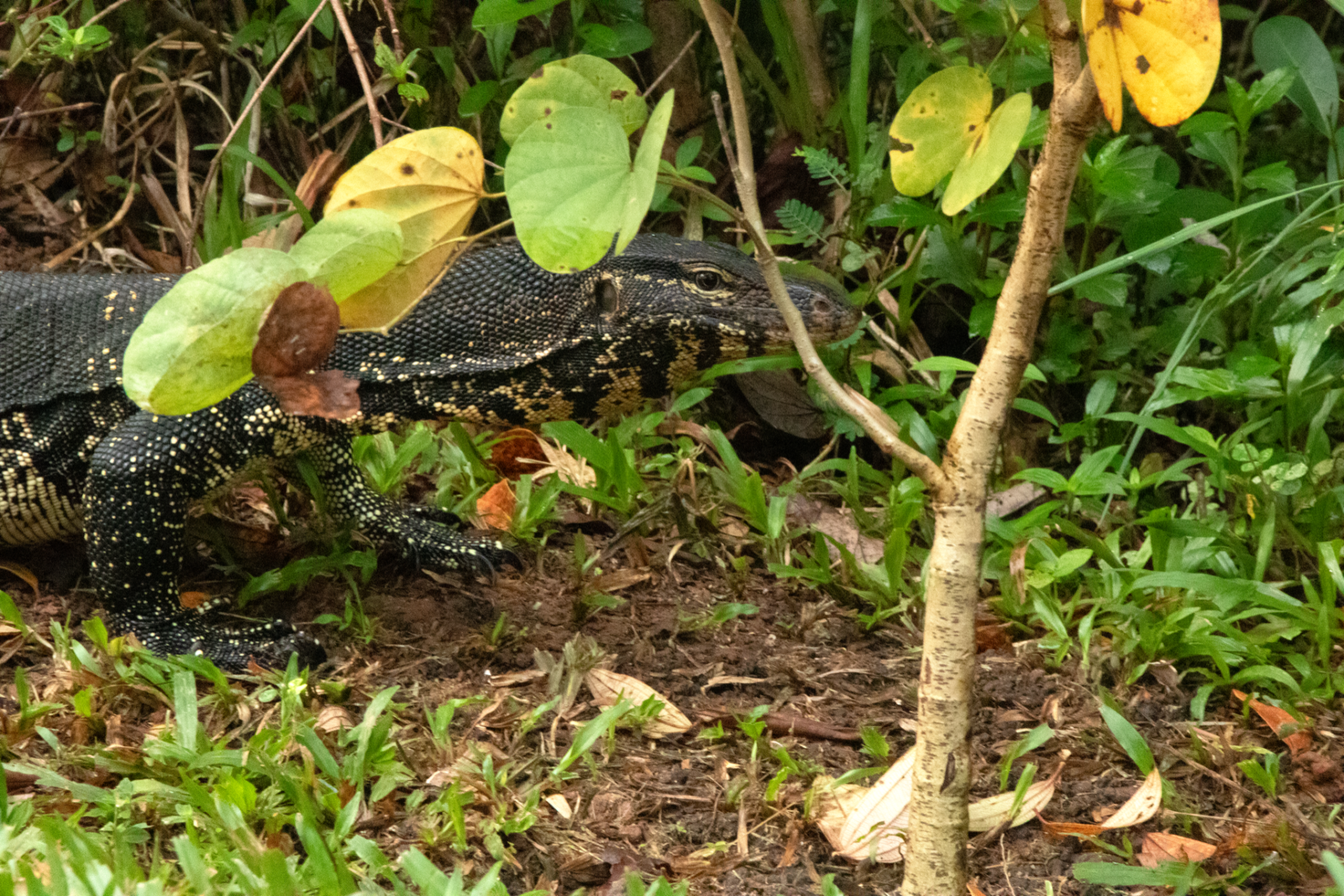
But if Colombo’s wetlands remain weakened, hurting the city’s chances to weather the strongest floods made more likely by climate change, a psychological, potentially more profound shift may already be underway. Couples taking daily sunset walks through mangrove forests and schoolchildren’s delighted shrieks when a monitor lizard pulls itself out of the water are a sign: Wetlands are slowly becoming a fixture of Colombo’s psyche. It’s a change that could mean more for the future of the ecosystem than any dumped pile of trash or paddy paved over with concrete.
As Diyasaru Park’s World Wetland Day celebration wound down in February, after two days of talks and presentations by politicians and conservation leaders, one table set up along the park’s winding pathways was still the life of the party. Dozens of children eagerly asked for more information from the table’s owners, representatives from the Urban Fishing Cat Conservation Project. The non-profit raises awareness on Colombo’s iconic fishing cat, an elusive predator with a spotted coat that inhabits the deeper reaches of Diyasaru.
Because of their shy nature and lack of familiarity around humans, many in Sri Lanka have come to see the animal as living proof of what makes wetlands dangerous, said Anya Ratnayaka, the project’s founder. Around Colombo, many fishing cats were hunted and slaughtered by poachers as the city expanded.
But as the generation shaping Sri Lanka’s future fawned over Ratnayaka’s table, clamoring for homemade cookies adorned with fishing cats drawn in frosting and admiring night pictures of the small cat captured by camera traps, there was no fear—only curiosity about the mysterious animal and the home ecosystem they shared.
As the Russian invasion of Ukraine shows, nuclear threats are real, present, and dangerous
The Bulletin elevates expert voices above the noise. But as an independent, nonprofit media organization, our operations depend on the support of readers like you. Help us continue to deliver quality journalism that holds leaders accountable. Your support of our work at any level is important. In return, we promise our coverage will be understandable, influential, vigilant, solution-oriented, and fair-minded. Together we can make a difference.
Keywords: climate adaptation, climate crisis, extreme precipitation, flooding, nature-based solutions, wetlands
Topics: Climate Change
